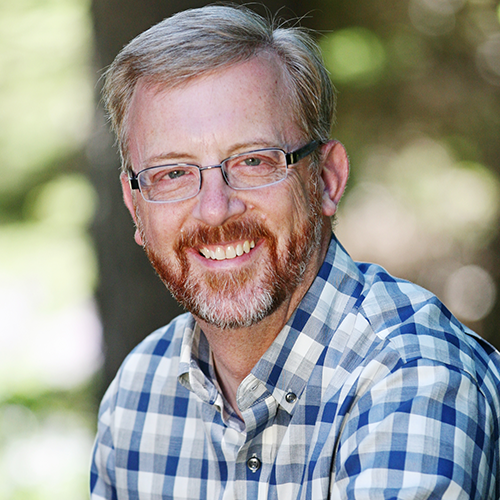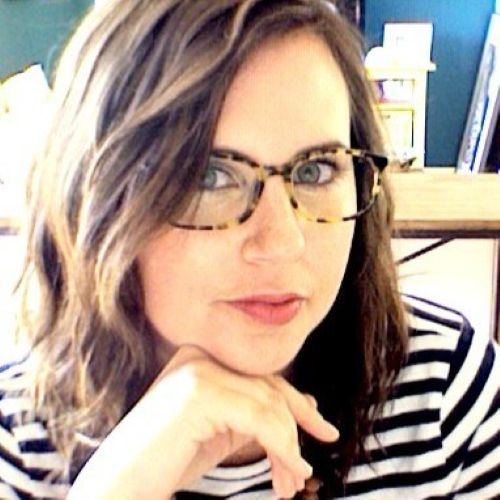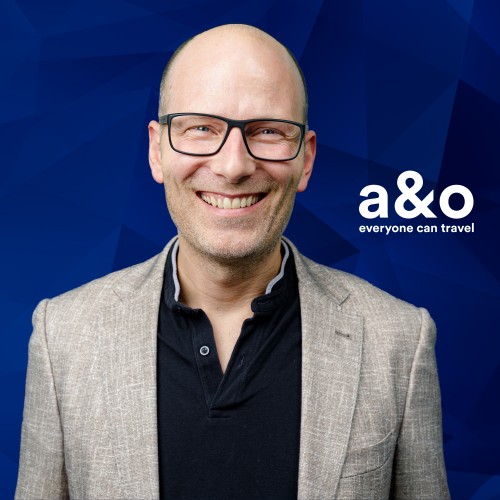Todd Davidson
Episode 70: Using Natural Beauty as Destination Driver, with Todd Davidson
In this episode, you will learn about how Travel Oregon has helped the tourism industry in that state grow exponentially under the leadership of Todd Davidson.
Todd was appointed Executive Director of the Oregon Tourism Commission, also known as Travel Oregon, in June 1996, and was named Chief Executive Officer in September 2004.
Under Todd’s leadership, the tourism industry in Oregon has flourished into an 11.3 billion dollar industry that employs more than 109,000 Oregonians.
In 2003, he helped lead an effort to establish dedicated and stable funding for the commission. This funding has been crucial in Travel Oregon’s ability to grow the state’s tourism industry through strengthening its base on international markets, leadership and sustainable tourism initiatives, and award-winning publications, niche-oriented websites, and advertising campaigns.
Travel Oregon has garnered 20 Mercury Awards during Todd’s tenure, including two top awards for Best Overall State Marketing Program in 2010 and 2013.
He has also served two terms as National Chair of the US Travel Association, from 2015 to 2017, and continues to serve on the US Travel Association Board, on the National Council of State Tourism Directors, and the Western State’s Tourism Policy Council.
A Bit More Background
Todd, you are a busy guy. Thank you so much for joining me today.
It is my pleasure, Nicole. Thank you so much for having me.
I know that you’re going to have a lot to share with our listeners today. But before we get started with the questions, I find it really valuable to hear your story in your own words, if you wouldn’t mind sharing a little bit about your journey with us and our listeners on the show.
I’m happy to. You know, first and foremost, I will point out that I have adopted Oregon as my home state. I was not born here. I’m originally from Iowa, but my wife and I moved to Oregon over 30 years ago, 33 to be exact, and it was just a couple years later, in 1988, so 30 years ago this month in fact, that I became involved in Oregon’s travel and tourism industry.
I was hired as a director of a convention and visitor bureau in the town of Albany, Oregon, the town that is known for an amazing array of Victorian architectural styles in homes and churches and buildings in the downtown core, and it was the hometown that we were living in at the time.
After six years of doing that, and some really fun successes with some great folks, the state tourism office had an opening for an International Marketing Manager, and so I applied for that position, and was hired in March of ’94. I was in the office for all of about five days and left for Japan, and that began my career with the state tourism office.
I was the International Program Manager for a couple of years, and then became Director, as you noted, in 1996, and so I’ve had the privilege and pleasure of being able to serve the state of Oregon in that capacity, as their State Tourism Director for 22 years, this year.
That’s amazing. On the one hand, you’ve accomplished a lot and I’m sure you’ve got a lot of experience and a lot of stories to tell, but on the other hand, I’m sure it feels like it happened in the flash of a moment. Right?
It really does. I love what I do. I believe in the power of the travel and tourism industry to create good jobs, and to create valuable economic opportunities and economic stimulus for communities, not only across the state of Oregon, but across our nation. That just keeps me jazzed, and that’s why I guess, it’s kind of a blink of an eye, and yet, it feels like this is what I was always called to do, and what I’ve always done.
Passion for the Job
You brought this marketing experience and the love of your community to your first position in this industry. I think that that’s just a really awesome kind of benefit of being in this industry, and it draws people like you and me to be so passionate about it.
That’s very true. We moved here in ’85 from 2000 miles away. About 4 months in, my former boss calls with a very nice offer to move back to Iowa. I put my hand over the phone and told Carolyn. I said, “Hey, my former boss is on the phone, and this is what he’s offering.”
And Nicole, her response was so immediate and so non-negotiable. I mean, she came right back at me with, “Are you crazy? We’re an hour from the ocean. We’re an hour from the mountains. If we want to do the city, we’re an hour from Portland. Why?”
We had just fallen so under the trance of the magic of this place called Oregon, and have certainly gone back to visit family and friends and such, but we love it here, and to be able to now be in a position where we can help create great jobs for Oregonians, to help stimulate economies in communities throughout the state, and to give back to this place that we love through the dynamics of a travel and tourism industry, has been a very, very special gift to us. We love it.
This is such a fun conversation! Let’s dive into a question I ask all my guests. There are so many choices out there, especially today, all over the world, that we’re competing with, and so, I’m wondering what you have done to help Oregon stand out from the crowd, and really break through that noise?
You know, there’s a couple of things that really come to mind for me Nicole. One is, in this whole area about focusing on strengths. Focusing on your assets. You focus on those things that are your point of differentiation. What are those things that you can own?
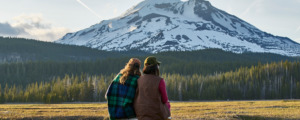
[bctt tweet=”“Focus on those things that are your point of differentiation. What are those things that you can own?” – @TDavidsonIII #WhyCollaborate #podcast”]
The second piece of it then is, how can you be nimble? How can you invoke a sense that you cannot be afraid to fail. You’ve got to be able and willing to take some risks. You’ve got to be willing to be an early adopter, if you see some potential for an opportunity, and you need to run with that.
I can go all the way back to probably ‘96, ‘97, when the State Tourism Directors would be together, and talking at one of their open forums. The question then was, how many of you are doing anything on this worldwide web? How many of you have a webpage?
We were one of the first states that had a website. We were one of the first states that were investing significantly in online advertising. We were willing to go there, but we were also making sure that we had set up our programs in a way that we could be nimble and modify our advertising buy, and our media mix if we needed to.
Our industry understood that. Our commission had granted us that kind of authority and autonomy to be able to move nimbly. Our legislature, that oversight body, wanted us to be able to be nimble. That’s been a great gift for us, to be able to be proactive in that way.
Natural Beauty as Destination Driver
How about that first part, focusing on your strengths?
Sure, I’ll give you one quick example. Oregon is known as a place with this incredible outdoor natural beauty, and this plethora of outdoor recreation experiences and opportunities. You will find that at the core of what we talk about. In fact, when we do all of our visitor profiles, our visitors are telling us more often than not, that it’s this uncrowded, unspoiled, natural beauty of Oregon that really draws them here, and then they choose to do different things while they’re here. And that may be an outdoor recreational pursuit like cycling or mountain biking or rock climbing or trekking, but it may also be a pursuit like exploring the wine country, or traveling our scenic byways.
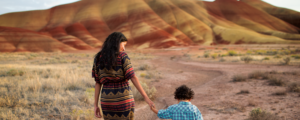
[bctt tweet=”“Oregon is known as a place with this incredible outdoor natural beauty, and this plethora of outdoor recreation experiences and opportunities.” – @TDavidsonIII #WhyCollaborate #podcast”]
They’re out in these incredibly naturally beautiful places, but they’re choosing to do a variety of different activities. This natural beauty is a destination driver for us, and so we make sure that it’s central in our advertising campaigns as well.
Is there a particular campaign that stands out?
Awhile back we came up with a campaign called The Seven Wonders of Oregon, and celebrated these incredibly, naturally beautiful assets that are located throughout the state, places like Crater Lake National Park, and Smith Rock, and the Wallowa Mountains, Hell’s Canyon area, the Oregon Coast, Mount Hood, and the Columbia River Gorge. These incredibly iconic naturally beautiful places.
But to me, the real magic started to happen when we also then started to bring in these other assets. As I mentioned, it’s about being able to focus on those strengths and those assets. Well, these other assets were that Oregon has a really strong maker community, a really strong group of folks that are artisan and craftsmen in a variety of ways. It could be wines and beers, but in this case, we have a group of folks that are manufacturing custom bicycles.
These are very high-end bicycles. They’re built one at a time for folks, and we decided to approach them and ask them to design a bicycle that could be specifically used and attributed to one of those seven wonders.
We turned this into a consumer activation campaign, and we took that bike, and we hid it at that wonder, and then created an online campaign that was basically, one of the greatest scavenger hunts of its kind. Giving people clues to where the bike was hidden along the Oregon coast, you know, somewhere on Mount Hood, in the Columbia River Gorge, at Smith Rock, and turned them loose to find these bikes.
We carried this out over seven weeks, one bike for each week, for each of the wonders, and it turned into this amazingly fabulous campaign, and of course, what I loved about it, is it was bigger than just travel and tourism. It was also letting consumers, not only across the country, but around the world, know that we had this bike manufacturing culture here too, that these makers were here in Oregon because they loved this place.
That is amazing. I love it. Circling back, I find it really interesting that you’ve been able to build this relationship with your legislature, and your stakeholders to give you that kind of autonomy so you can take risks. Can you just elaborate on that a little bit more in terms of how you balance taking those risks with the accountability that you have back to those stakeholders?
Sure. You know, the foundation for really answering both of those pieces is research.
We invest significantly in research. We buy research. We conduct research. We do some of our own in-house, whether we’re surveying our industry partners, in terms of what they’re seeing and hearing from consumers, from the travel trade, from the media, or we’re out talking to them, the travel trade and the media, ourselves, in terms of what they’re seeing in terms of transit, the visitor profiles, the ad accountability research, the work that we’re doing in that space, measuring the economic impact of travelers.
Therein really lies, what I consider, kind of that key point, and that is, as long as we make decisions that are in the best interest of the consumer, we will never make a bad decision.

[bctt tweet=”“As long as we make decisions that are in the best interest of the consumer, we will never make a bad decision.” – @TDavidsonIII #WhyCollaborate #podcast”]
It could be a significant investment, something that other destinations aren’t pursuing yet, but it’s a direction we want to go. It’s because we believe, based on research, based on our own gut, and what we’ve seen, this is where consumers are going, so we will take that risk, but it’s grounded in research and with a very consumer-centric focus.
When I sit before the legislature, and they say, “Why did you do this,” and I’m able to cite the research and talk about how the consumers were telling us that this is what they wanted, this is where they were going, this is how they were consuming travel, this is how they were looking to plan their trips, this is how they were looking to choose destinations, one over another, and what kinds of things were going to go into their consideration set. That’s our defense for anything like that, you know, in terms or the investments we’re making and the initiatives that we’re undertaking.
I just want to make sure that the listeners caught that, and that you said it’s grounded in research, and it’s consumer-centric. And with that, we will not make a bad decision. I think that’s just a great measuring stick. Great advice.
Thanks, Nicole. What we do takes a lot of teamwork and a lot of great research.
Absolutely. Fantastic. Another question I like to pose: Is there a challenge that your organization has faced, and then, can you talk about the creative solution that came from that?
One of the things that came to mind for me just now, as you were asking me that question, Nicole, was a challenge that was brought about with the economic collapse that we all experienced in 2008 and 2009.
Our funding model was changed back in 2003, so we’re now funded through a 1% statewide lodging tax. And with that change, it also means that our budget is going to ebb and flow with the state’s economy.
So, when we were looking at significant downturns in lodging activity, either because there were going to be competitive rate decreases, or there were occupancy challenges, etc., that meant our budget was going to be facing a potential impact. The way the budget works, we need to forecast 2 years out.
Here we are trying to forecast two years out, how deep, how far, and how long was this going to go. We made the decision to reduce our budget by as much as 15% in one year. We also tabled some programs and made sure that we heavied up on our sales and marketing programs.
We needed to be very focused on driving demand for travel to and within the state of Oregon. It was not an easy decision to make, because I cherish our Destination Development programs.
We all agreed, that at this time, we really needed to make sure we were going to be very, very nimble. Oregon was celebrating its sesquicentennial, which was its 150th anniversary, for any of your listeners that may not know … I had to learn what a sesquicentennial was, the 150th anniversary of our statehood.
We came up with a campaign where people could get out and explore the state, and kind of collect badges that they could use on their social sites, and kind of earn these badges that they could then post on their Facebook profiles and the like, and they could basically earn the title of Oregonian.
So whether you moved here or you were born here, you could earn that title with these badges. I chose Oregon. For me, that was just one example of how we took an opportunity, sesquicentennial, in the light of some very harsh economic times. We took a challenge and turned into an opportunity.
That is a great example. Thank you, Todd. I want to back up to … Because you mentioned your Destination Development programs. Could you expand a little bit more on what those programs are, and how you execute on those?
Sure. We have an entire department dedicated to Designation Development and Product Development work. One of the most visible aspects of that work is what we refer to as our Tourism Studios.
Tourism Studios are where we go into communities, where we’ve been invited, and they have identified tourism as a viable and vital component of their local economy. What we ask them to do in their invitation to us is, that they invest in this, what I would call, kind of this sweat equity. Their skin in the game, is the fact that they’re bringing together the local leadership, the volunteer base, that will not only bring life to this, but will keep it alive into the future.
And then we come in, and this is a multi-week, multi-month program. In many of the communities here in Oregon, it might be also working with public agencies, because so many of their assets might be mountain biking trails on National Forest land.
These Tourism Studios are significant. We also have folks that are working in outdoor recreation initiatives. And again, this is not about the outdoor recreation marketing, but instead, it’s about working with the outfitter guides or working with the public agencies that are providing the access and the resource for our visitors to be able to get out and recreate in Oregon, bringing them together.
We’ve recently convened The Oregon Outdoor Recreation Initiative, where we’ve brought together private sector, public sector, not for profits, conservation groups, recreation groups, etc, to look at how Oregon can and should better capitalize on the outdoor recreation economy, while also making sure we preserve this place that we have the privilege of promoting.
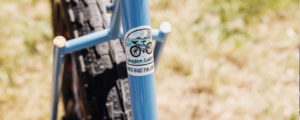
[bctt tweet=”“We’ve recently convened an initiative to look at how Oregon can better capitalize on the outdoor recreation economy, while also making sure we preserve this place that we have the privilege of promoting.” – @TDavidsonIII #WhyCollaborate #podcast”]
That, in just a quick overview, are just a few of the examples that I would give you, of some of the work that’s going on in our Destination Development department.
The Oregon Way
What a great overview. I like to ask about collaboration – and some of what you just shared – it’s all about collaboration. Working with groups that some would say are competitors and collaborating. That’s what it’s all about in my book.
When I get asked how did I do it, my answer is very simple, “I didn’t. It was this way when I got here, and my job is to never screw it up,” because it’s just part of who we are as Oregonians. It’s just kind of in our DNA.
If I can, I’ll give you an example, that’s even a little bit outside. I’ll call it tangential to the travel and tourism industry. We have a burgeoning wine industry here. In fact, when I got involved in the tourism industry in Oregon 30 years ago, I think there were 75 wineries in the state of Oregon. Now, there’s over 700 that are here in the state of Oregon, 30 years later.
In the case of one of these wineries, a gentleman went in and bought some land, and planted some vines in 1998, 20 years ago this year. And in 2004, was preparing to bring in his first harvest, and make his first wines, and he suddenly and catastrophically and tragically died, very suddenly.
His sister flew into Oregon. She lived in a neighboring state, and she flew into Oregon, I believe, with the assumption that she was going to need to sell the grapes, get what money they could, and kind of close down what had been her brother’s dream.
She walked into the winery, and in that winery, were 12 other Oregon winemakers, and they said to her, “We’re here to bring in your brother’s crop. We’re here to make your brother’s wine.”
And they did. Together, those 12 Oregon winemakers brought in the crop, made the wine, and that winery is still going today. And now, 20 years later, on their 20th anniversary, each month this year, that sister that I referenced early at that winery, is now celebrating each of those 12, by showcasing, not the wines of this winery, but the wine of one of those 12, every month this year, and celebrating them, promoting their product, retelling this story, because this is the Oregon way. This is the way things get done here in this amazing place that I have the privilege of calling home.
I love that story, because I think it epitomizes the way Oregonians approach things, in that very collaborative manner. It’s not about us versus you, or me versus you. There’s a “we,” and we need to do this.
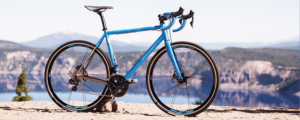
[bctt tweet=”“When collaborating, it’s not about us versus you, or me versus you. There’s a “we,” and we need to do this.” – @TDavidsonIII #WhyCollaborate #podcast”]
That is a tremendous story, like you said, showing the DNA of Oregon.
Earlier you talked about funding. I know funding of tourism is a challenge for many. If you could take us down that path of how Travel Oregon is funded, that would be great.
I’m happy to. Within this topic area of cooperation and collaboration, it’s a perfect place to talk about our funding model, because prior to 2003, Oregon’s tourism office, and statewide tourism marketing programs, were funded through lottery dollars here in Oregon, as many economic development programs were.
In 2003, our budget was 47th in the country out of 50 states. And for folks here in Oregon’s travel and tourism industry, we thought that was kind of embarrassing. For all that we had to offer, to be 47th at anything just didn’t feel right.
So the industry, not the agency – It wasn’t the state agency going to the legislature asking for more money – It was the industry saying to the legislature, “We have an idea for you. We’d like you to tax our customers.”
I don’t know about you, but I don’t hear that a whole lot. They said, “We’d like you to start with a 1% statewide lodging tax, and here’s what we ask though in return. With that 1%, we want to know that 100% of that money is going to go to Travel Oregon. It’s going to go to statewide tourism marketing programs. We want to know that Travel Oregon is going to be able to be set up, albeit, as a public agency, but they’ll be able to be exempt from some of the administrative oversight, so that they can be as nimble, market-driven, and market responsive, as entrepreneurial as they possibly can be while still being a public agency.”
And so, led by the lodging industry, the entire travel and tourism industry in Oregon rallied and went to the legislature and said, “Do this.”
Our legislature at the time was controlled by one party, and the governor was from another party. There were members of the legislature that had taken no new taxes pledges, that stood up on the floor of their respective chamber and said, “I may have signed a no new taxes pledge, but my industry, my constituents, have asked me to do this, and I am going to honor that request, because I believe that this is appropriate.”
As a result, our budget went from being 47th in the country, to the mid 20’s.
Fantastic. Thank you so much, Todd. This has been a really awesome conversation, as I knew it would be, and inspiring actually.
Nicole, this has been great. I have so enjoyed my time with you.
We value your thoughts and feedback and would love to hear from you. Leave us a review on your favorite streaming platform to let us know what you want to hear more of. Here is a quick tutorial on how to leave us a rating and review on iTunes!
